THE LOST ART OF MOVING HOUSES (1900)
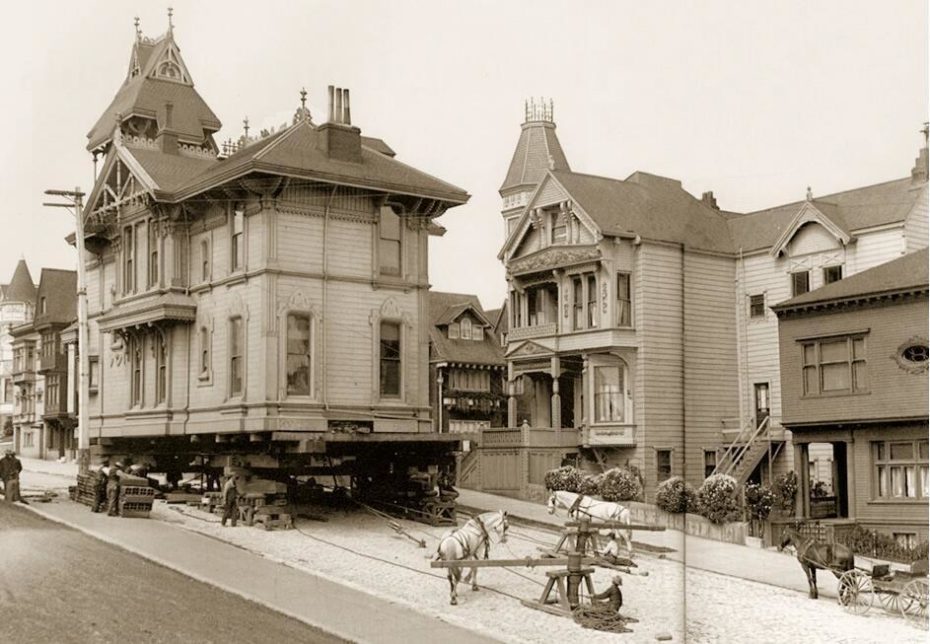
Brownstone Detectives investigates the history of our clients’ homes.
The story you are about to read was composed from research conducted in the course of one of those investigations.
Do you know the history of YOUR house?
********************************************************************************************************************************
An article in the 28 March 1900 edition of the Brooklyn Daily Eagle caught our eye the other day. It detailed an old practice of moving houses, and it took place in a time when the economics were such that their transport to another lot made more fiscal sense than tearing them down wholesale.
In this story, however, the time it took to move this particular house took a toll on the neighboring residents.
And, at one point, they gathered to tear the house down, themselves…
THE HOUSE IN THE STREET
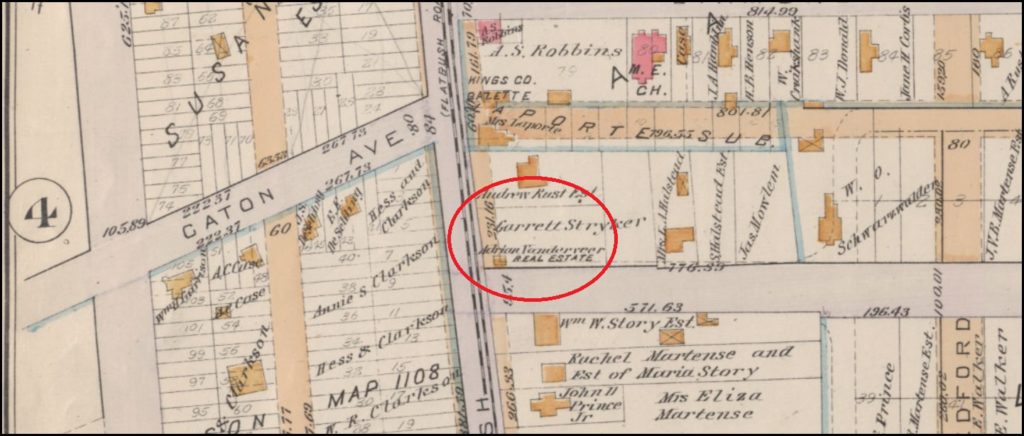
The story took place in the early part of 1900 in Flatbush at the corner of Flatbush Avenue and Linden Boulevard. The subject was a frame structure that was being moved from that corner, although not quickly enough for local residents who protested the house’s temporary location on Linden Boulevard. And by “on Linden Boulevard,” we mean on the actual roadway itself.
“A frame building stands in the middle of Linden boulevard, at its junction with Flatbush avenue. The building bears the sign of Vanderveer & Williamson, real estate agents,” the reporter started his story.
Vanderveer & Williamson, we discovered – through combing the newspaper’s archives – were Adrian Vanderveer and Adrian N. Williamson, who had, by this point, had a real estate business at that location – known as No. 831 Flatbush Avenue – for at least 10 years.

“For some time, until a week ago, the house stood on the sidewalk on the northern side of Linden boulevard,” the Eagle continued. “The Eagle told about the house being left on the sidewalk a week ago and the next day the building was removed to the street, where it has stood ever since.”
MUDHOLES & STAGNANT POOLS OF WATER
In that Eagle story from the week before, the paper had given the real reason for the anger of the local residents who protested the building’s sitting on one of their sidewalks.
The story told of the impassable streets of Flatbush, and the reporter noted the mudholes and stagnant pools of water, and how pedestrians were “compelled to keep close to the building in passing.
“Boards,” the reporter continued, “have been laid down to walk upon, but as is usually in such cases, the boards are not long enough, and a person who tries to jump from the end of the board to a dry spot generally wishes that he hadn’t.”
Because of these conditions, the building sitting on a sidewalk had “effectively blocked the way of pedestrians.”
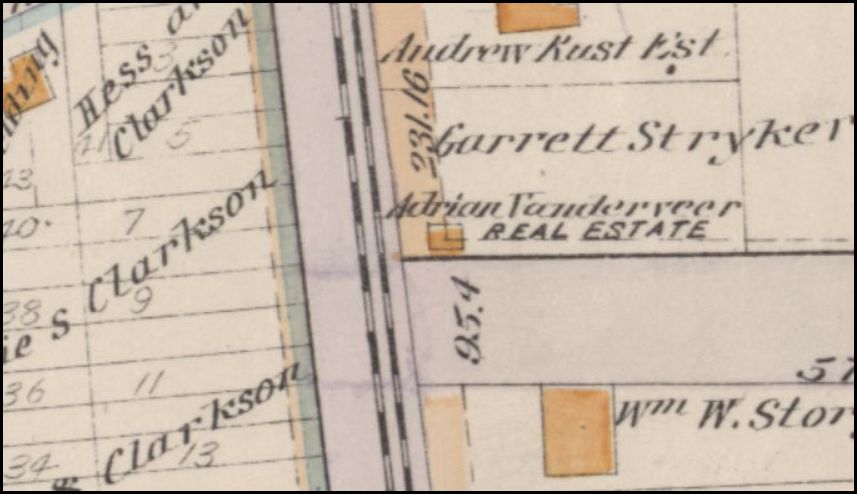
The problem for Vanderveer and Williamson, though – and for a man by the name of George W. Woods, whose home of record was 679 Jefferson Avenue and who had gotten a permit for “the removal of the building to Ocean avenue, between Avenues C and D.”) – had to do with an obstruction that they, themselves, were dealing with. It was an obstacle that their building – once in transit – would have to come up against, and it explained why the building had been left standing in the street for so long.
“The building towers about six feet above the feed and trolley wires of the Brooklyn Rapid Transit Company on Flatbush avenue and the delay has been caused, the owners of the building say, because the electricians of the company have not yet found time to cut the wires to permit of the passage of the building across the street.”
So, the building sat on the boulevard. And it sat. And it sat. Until one day neighbors decided to take matters into their own hands.
“Last night a number of citizens residing on the boulevard met to talk over the outrage, as they term it. One man proposed that they proceed to chop the building down. The plan was received with favor and several started after axes,” the Eagle reported, but, alas, “wiser counsels prevailed.”
WHAT HAPPENED TO THE FRAME BUILDING?
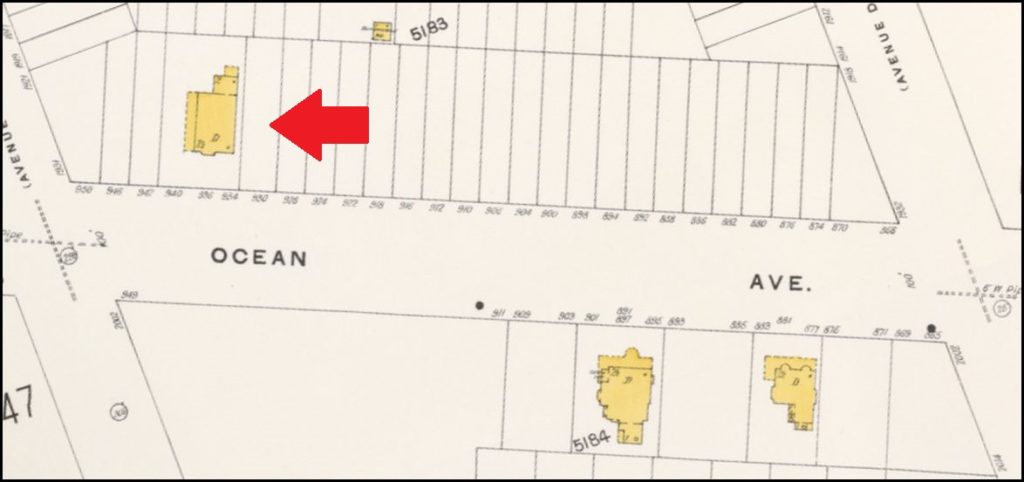
Although it is likely that the frame building made it to Ocean Avenue, it is unlikely that it still stands as most of the houses on that stretch of the avenue are either constructed of masonry or are of such a stature that this would have been noted in the original article. The writer merely stated that the house was a “frame building” and that it stood “six feet above the feed and trolley wires,” which would indicate a two-story structure, a building that had a business on the bottom with residences on the second floor. Additionally, insurance maps of the time show the building to contain a rather small footprint, perhaps 20′ x 35′, structure.
The building was not in existence as late as 1884, according to an insurance map of that year, but by 1890, it was sitting on its corner at Linden and Flatbush. Thus, by 1900, when it was moved, the building was less than 15 years old – valuable enough to move.
WHY WAS THE BUILDING MOVED IN THE FIRST PLACE?
A story appearing in the Brooklyn Daily Eagle, just a month before the building’s public predicament appeared, revealed the incentive of the real estate mens’ desire to get rid of the old frame building on their corner in order to improve the plot of land.
“One of the most extensive single improvements initiated in Flatbush within the past ten months is that of the property abutting on Flatbush and Linden avenues,” noted the Brooklyn Daily Eagle, “with a frontage of 90 feet on the former and 300 feet on the latter.
Clarence H. Tabor, a Chicago builder, had apparently purchased the lot and had developed plans to build some really new and exquisite properties thereon investing to the tune of a quarter of a million dollars.
“The distinctive point about this enterprise is to be sought on the Linden avenue front,” the Eagle continued, in an article that amounted to a veritable press release for Tabor. The story highlighted Tabor’s Philadelphia influences and his Chicago past.
“It consists of nine high class residences conceived and built upon Philadelphia and Chicago lines. The Philadelphia part of this dual idea covers the external appearance and interior plan of the buildings, while their arrangement in a contiguous row is its Chicago application. In the Quaker city such houses are built in twos, separated by intervening strips for light, air, and grass from the adjacent twins on either side. Each of the houses is built of Indiana limestone and French pressed brick, and the interiors are finished off in hard woods and parquet floors. Two apartment buildings four stories in height take up the Flatbush avenue frontage, the street floors being intended for store purposes.
Vanderveer & Williamson noted that when “the whole improvement” was done they would “return to their old quarters on Flatbush avenue,” likely through a deal or understanding that the realtors had with Tabor. Although they did not move back into the building for one reason or another, the attractive corner location would continue to house real estate firms well into the 20th century.
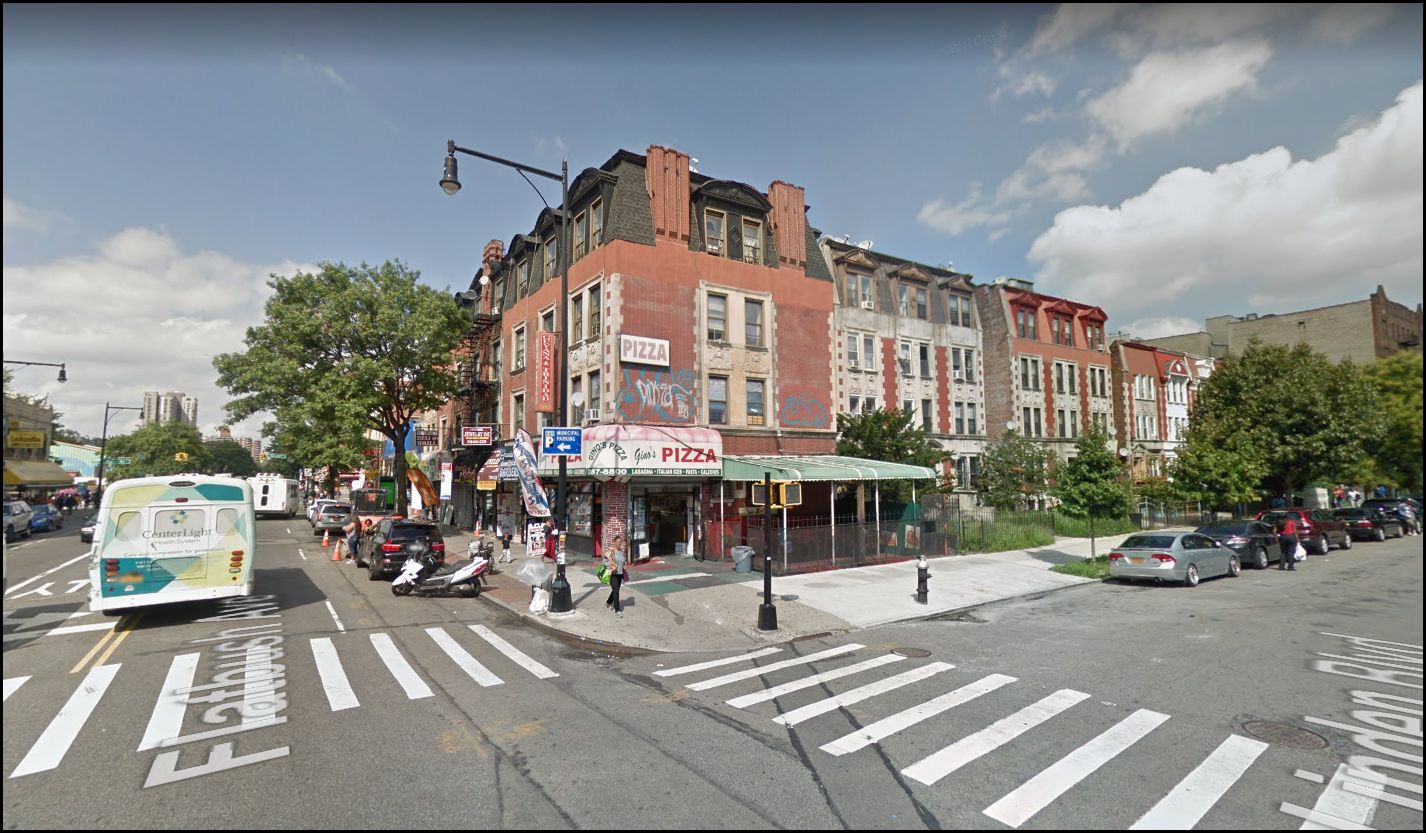
———————————————————————————————————————–
 Brownstone Detectives is an historic property research agency. Our mission is to document and save the histories of our clients’ homes. From our research, we produce our celebrated House History Books and House History Reports. Contact us today to begin discovering the history of your home.
Brownstone Detectives is an historic property research agency. Our mission is to document and save the histories of our clients’ homes. From our research, we produce our celebrated House History Books and House History Reports. Contact us today to begin discovering the history of your home.